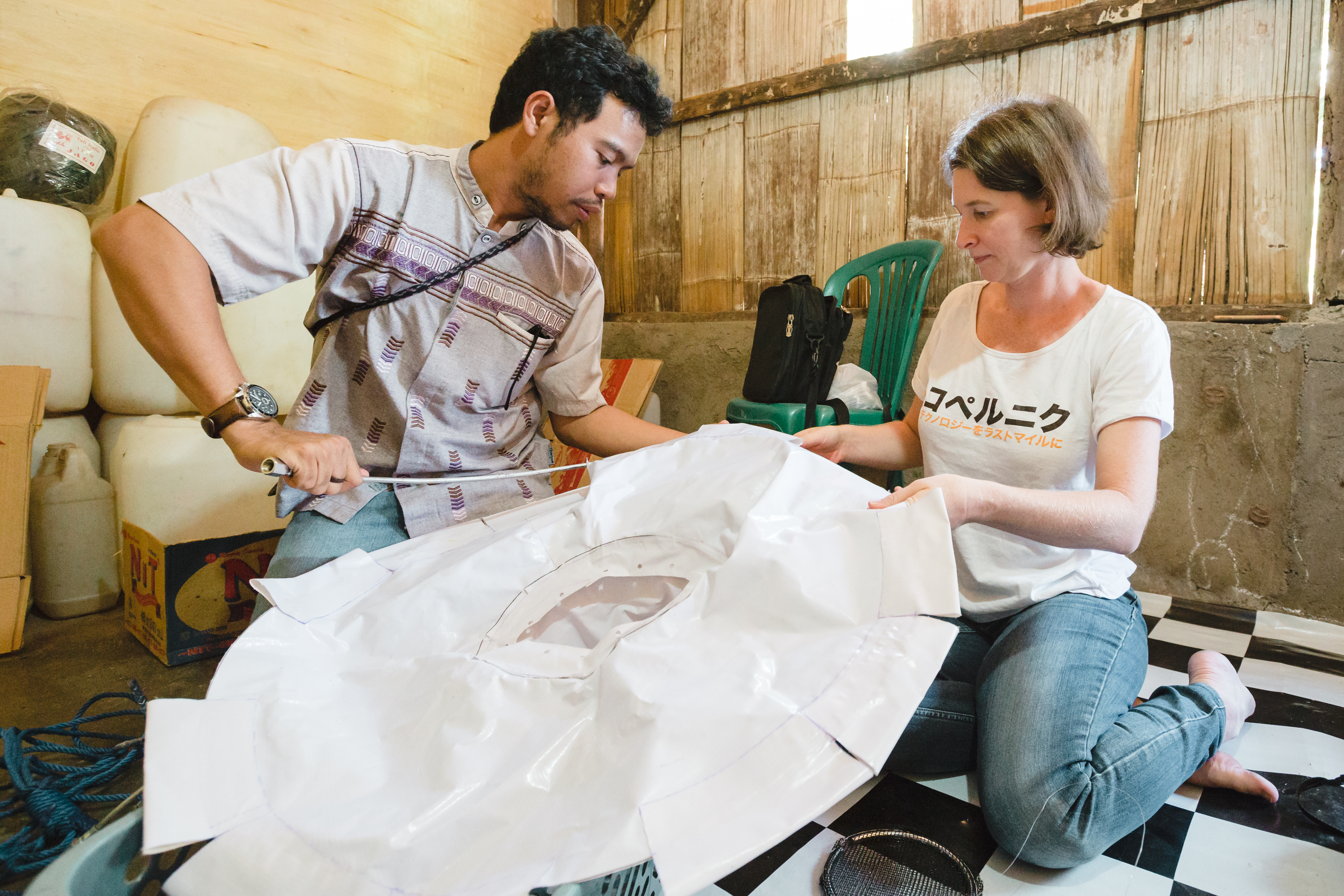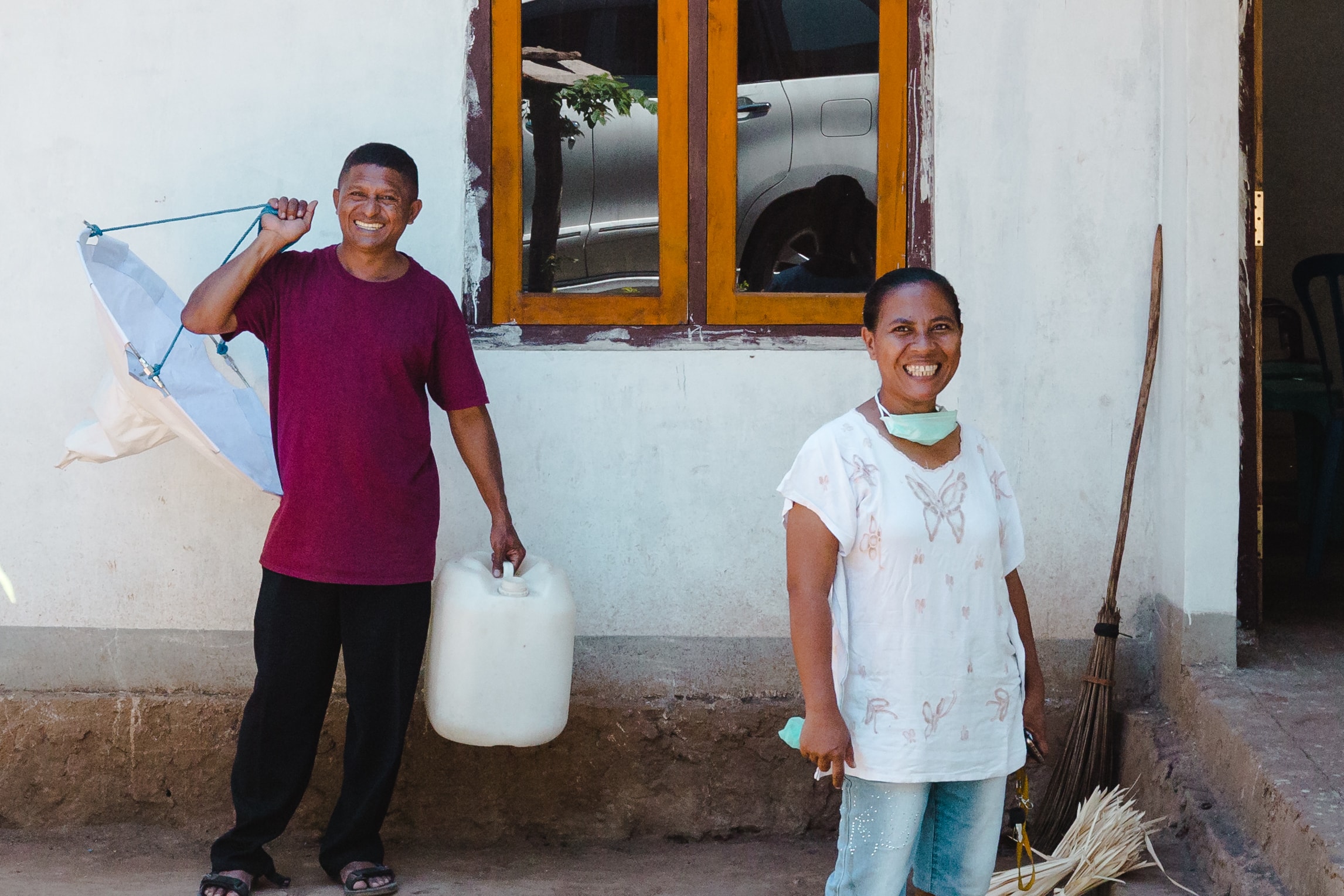
East Flores Regency’s local government office for cooperatives — the DINAS Koperasi — has commissioned Kopernik for 10 forest honey filters. Over the past year, Kopernik has conducted experiments of its honey filter prototype with a local cooperative partner, Senoesa, which promotes sustainable harvesting and processing practices within local communities to produce more forest, honey.
Traditional honey extraction is time-consuming and conducted with a number of tools, which are often cumbersome to carry and contribute to loss during the honey filtration process. An experiment with Kopernik’s honey filter prototype demonstrated a 37.5% decrease in the time required for extraction, in addition to 6.25% more honey gained during a single extraction as compared to traditional filtration methods. Since 2016, Kopernik has improved upon three prototypes of the honey filter through user feedback and field testing.
Our honey filter was made from locally sourced materials, is light and can be disassembled and folded to make it easier for honey farmers to transport to the forest.
Senoesa — a cooperative that includes 70 honey collectors — is active in the regencies of East Flores and Sikka on the island of Flores, and is seeking to widen its coverage to the regency and island of Alor. In 2016, Senoesa sold 2,800 bottles of collected forest honey at a price of IDR 75,000 per bottle. This year Senoesa is targeting to sell 5,000 bottles with the improved prototype and collection process. Through the 10 commissioned honey filters, the DINAS Koperasi seeks to strengthen local livelihoods, widen forest area coverage for honey collection, and work directly with an estimated 100 forest honey collectors in East Flores.
Forest honey is a leading non-timber forest commodity currently prioritized by Indonesia’s Ministry of Forestry.1 The annual demand for forest honey is currently 3,000 - 4,000 tons, while the annual production capacity in Indonesia is only around 1,000-1,500 tons.2 Although honey production increased by more than 100 percent from 2014 to 2015, Indonesia currently imports honey to meet domestic demand, with up to 70 percent of Indonesia’s honey supply imported.3 Kopernik predicts a market opportunity given the low-level of investment required to harvest forest honey without the need to construct or maintain artificial hives.4
Read more about Kopernik’s Forest Honey Filter prototype here.
With our honey filter, honey farmers no longer have to carry many large tools to the forest and there's less honey lost during the extraction process.
2 Fatmawati (2013). Membenahi dan Memoles “Madu Mutis” dengan sistem tiris, Menuju Produk Unggulan Pulau Timor.
3 Fatmawati (2013). Membenahi dan Memoles“MaduMutis” dengan sistem tiris, Menuju Produk Unggulan Pulau Timor.
4 Kuntadi (2013). Pengelolaan Lebah Hutan. Pusat Litbang Konservasi dan Rehabilitasi, Bogor.




